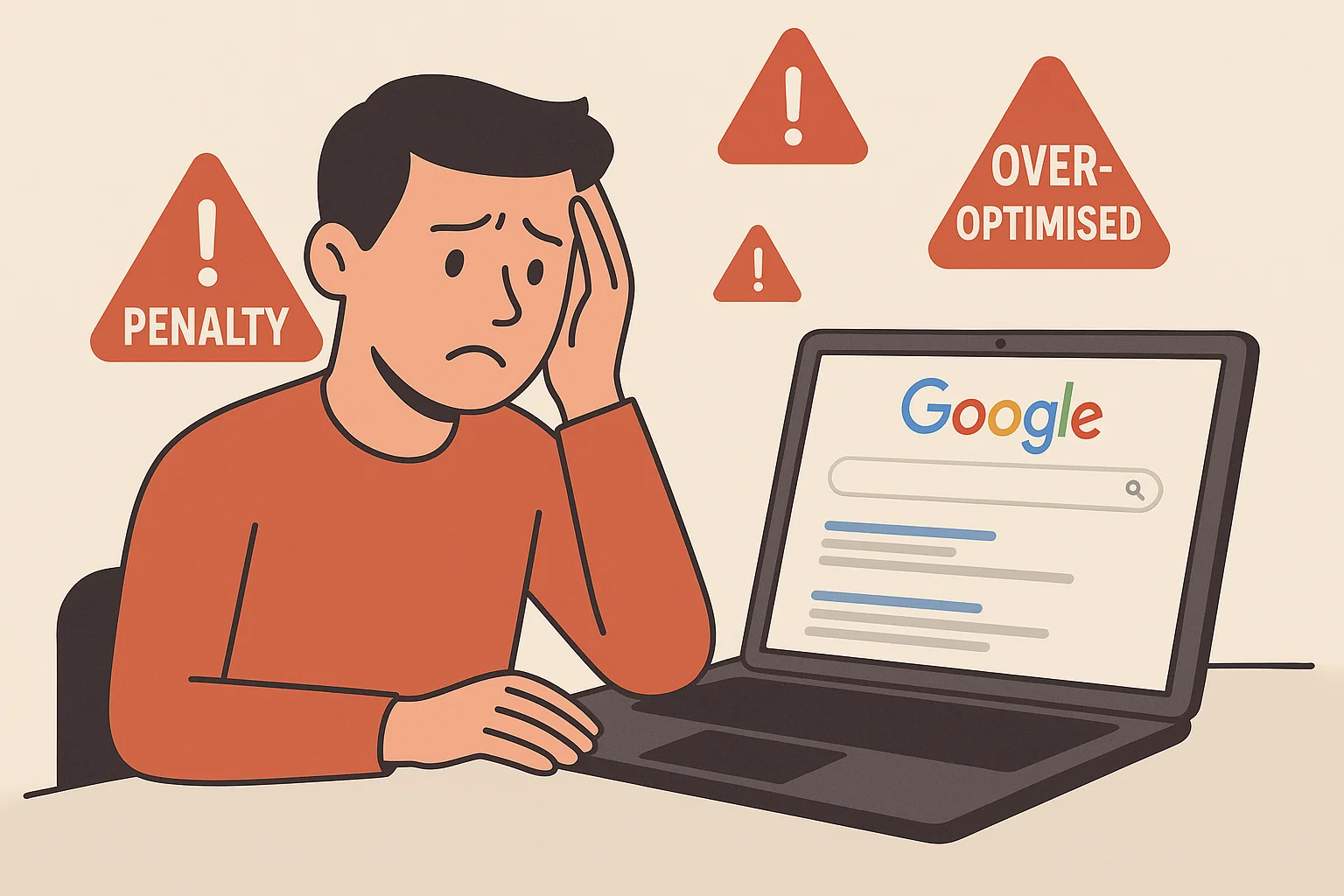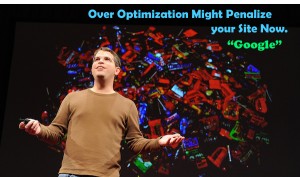
But here’s the thing, Google doesn’t hate SEO. It hates abuse of SEO. There’s a fine line between optimising your website for better rankings and overdoing it until Google waves the red flag. And if you cross that line? You might wake up to find your blog buried on page ten, or worse, completely gone.
Let’s break this down in plain, human terms. What did Matt Cutts actually say? How do you know if your site is in trouble? And most importantly, how do you stay safe while still getting traffic?
What Matt Cutts Really Said About Too Much SEO
First, a little context. Matt Cutts was like the face of Google’s fight against webspam. For years, he was the guy answering webmaster questions, explaining updates, and (sometimes) warning bloggers about shady tricks.
Back in 2012, during a conference, Cutts mentioned that Google was working on a penalty for “overly SEO’d sites.” The internet freaked out. People thought it meant Google was coming after anyone doing SEO at all.
But his point was simpler:
Google wanted to reward sites that focused on content and user experience, not sites stuffed with keywords and sketchy backlinks. He literally said they were targeting people who did “too much SEO”, meaning spammy, manipulative stuff designed to game the system.
So no, Google isn’t against optimising your site. They’re against people trying to cheat the rankings. 
Think of it like this: seasoning your food makes it taste better. But dump an entire jar of salt in? You’ll ruin the meal. That’s over-optimisation.
Signs Your Site Might Be Penalised
Here’s the nightmare scenario: You log in to Google Analytics and, bam, your organic traffic graph looks like a cliff dive. What happened? You might be looking at a penalty.
Some clear red flags:
Sudden drop in traffic: One day you’re getting 1,000 visits, the next day, barely 200.
Pages vanish from search results: Try Googling your own content. If it’s gone (and not just dropped a few positions), something’s wrong.
Manual action warning: Inside Google Search Console, check for “Manual Actions.” If you’ve got one, Google straight-up penalised you.
Lower rankings across the board: Instead of one page falling, your entire site loses positions.
Readers often ask: “How do I know if Google penalised my site?” The answer is simple, start with Search Console. If there’s no manual action, it could be an algorithmic penalty (like Panda or Penguin back in the day).
Bottom line: if your traffic collapses and competitors are unaffected, it’s worth investigating.
What Counts as “Too Much SEO”?
So, what exactly pushes you into penalty territory? Here’s the short version: when your site screams “I’m trying too hard.”
Here are the biggest offenders:
Keyword Stuffing
Example: “Best cheap shoes cheap shoes buy cheap shoes online.” Nobody talks like that, and Google knows it.Spammy Backlinks
Buying hundreds of low-quality links from shady directories? Classic penalty trigger.Over-Optimised Anchor Text
If every backlink points to your site with “best SEO tool” as the anchor, it looks unnatural.Hidden Text or Links
White text on a white background. Tiny hidden links. Old-school black hat that still gets sites nuked.Overloaded Meta Tags
Titles stuffed with twenty keywords. Meta descriptions that read like a robot.
This is where the question “Can you overdo SEO?” comes in. Yes, absolutely. Optimisation is good. Obsession is dangerous.
Common Myths – Is Google Sites Bad for SEO?
Another common worry I hear: “Is Google Sites bad for SEO?”
Short answer: No. The platform you use doesn’t make or break your rankings. You can rank on WordPress, Wix, Squarespace, or even Google Sites, if your content is good and your SEO is solid.
What hurts isn’t the platform, it’s how you use it. If you’re writing thin content, ignoring speed and mobile optimisation, or building spammy backlinks, it doesn’t matter where your site lives. Google will still penalise you.
So relax. The problem isn’t “Google Sites.” The problem is usually bad SEO habits.
Safe SEO Practices That Actually Work
Let’s get practical. What should you actually do if you want rankings without risking penalties?
Write for humans first, search engines second.
If your post sounds unnatural when read out loud, fix it.Use keywords naturally.
Once in the title, a couple of times in the content. That’s enough.Build quality backlinks.
Guest posts, niche edits, natural mentions. Forget those $5 Fiverr link packs.Fix technical basics.
Mobile-friendly design, fast loading times, clean URLs.Focus on E-E-A-T (Experience, Expertise, Authoritativeness, Trustworthiness).
Google loves content that comes from real people with real knowledge.
Basically, be helpful. That’s what Google wants.
How to Recover from a Google Penalty
Okay, worst-case scenario: you’re already penalised. Don’t panic, you can climb back.
Here’s how:
Check Search Console
Look for manual actions. If it’s there, Google will even tell you the reason.Audit Your Backlinks
Use tools like Ahrefs or SEMrush. Identify toxic or spammy links. Disavow them if necessary.Rewrite Spammy Content
Thin, keyword-stuffed articles? Rewrite them into useful, human-friendly guides.Fix Technical Issues
Hidden text, broken redirects, duplicate content, all of that needs cleaning.Submit a Reconsideration Request
If you had a manual penalty, tell Google you fixed things and ask them to review.
Recovery takes time, but it’s possible. I’ve seen blogs bounce back in 3–6 months if they take it seriously.
The Balanced SEO Strategy
So what’s the sweet spot between too much SEO and not enough? Balance.
Think of SEO like going to the gym. You can train hard and see great results. But if you overtrain, lifting weights 6 hours a day, you’ll burn out and injure yourself. Same with SEO.
Here’s a balanced approach:
Write high-quality, long-form content.
Optimise titles and meta descriptions, without keyword stuffing.
Earn backlinks naturally by being genuinely useful.
Keep site speed, mobile-friendliness, and navigation clean.
Watch your analytics, but don’t obsess daily.
Long-term, Google rewards sites that are consistent, helpful, and user-first.
Wrapping It Up
So, can you overdo SEO? Absolutely. But don’t confuse “doing SEO” with “abusing SEO.” Matt Cutts was right, Google will always find ways to push back against manipulation.
But if you focus on building a site people love, you’ll be fine. Traffic might take longer, but it’ll stick. No penalty nightmares, no sudden crashes, just steady growth.
At the end of the day, SEO is about trust. Trust from your readers, and trust from Google. Don’t break it.

Chris Digital, tech enthusiast and digital marketer, shares insights on WordPress, SEO, Adsense, online earning, and the latest in graphics and themes.